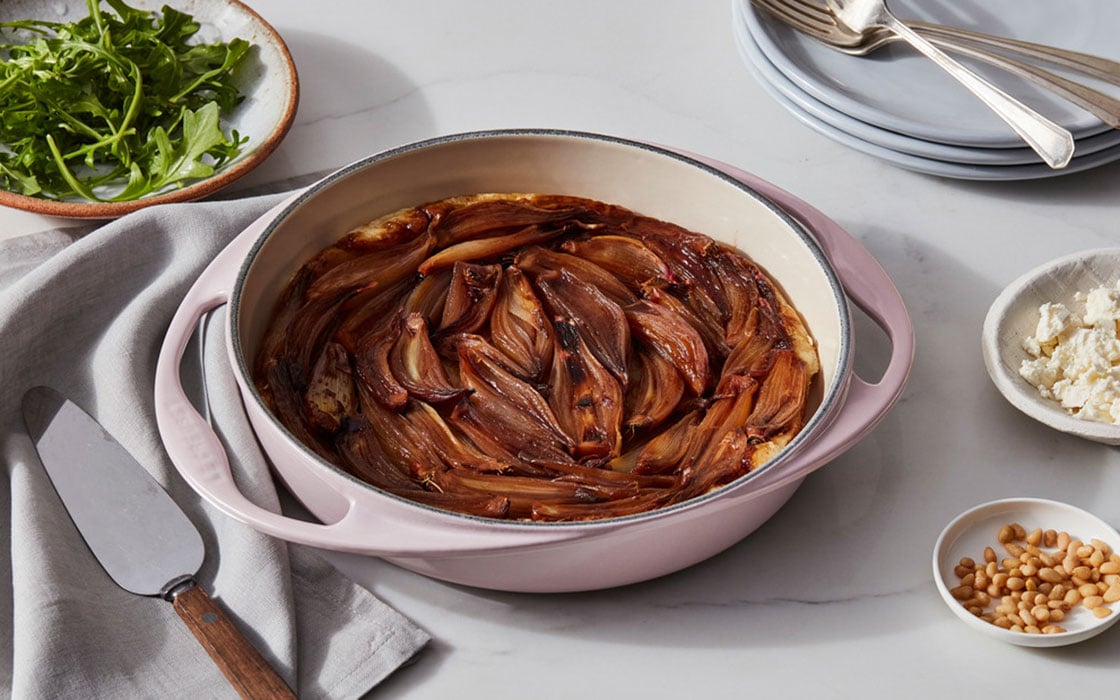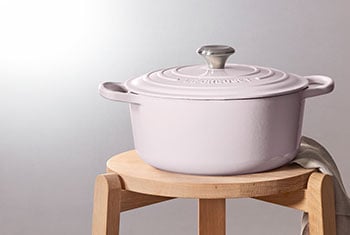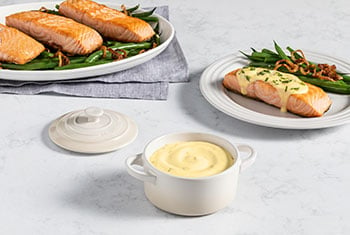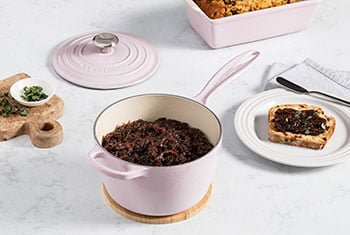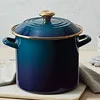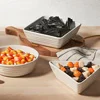The original Tarte Tatin may have been a mistake but learning to perfect this now beloved French dessert at home certainly won’t be. The Tarte Tatin literally turns the traditional tart on its head, with a richly caramelized filling baked underneath a blanket of buttery dough. Flipped upside down to serve, this rustic dish has become a staple of French cuisine, with a myriad of sweet, fruity interpretations as well as quite a few savory versions as well. And Le Creuset’s Heritage Tarte Tatin Dish makes it easy to master this classic recipe.
Shop Heritage Tarte Tatin Dish Get the Recipe: Shallot Tarte Tatin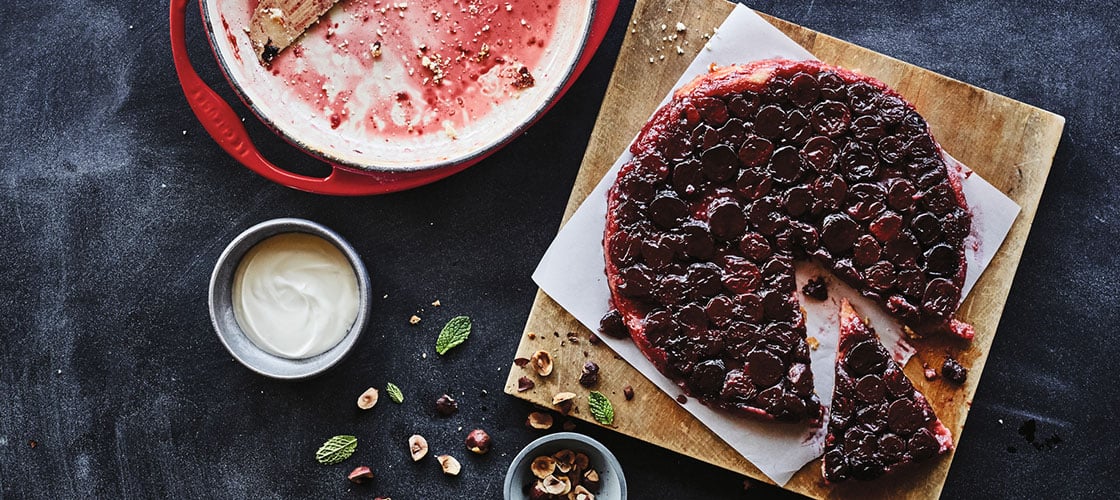
The Culinary Inspiration of Tarte Tatin
Legend has it that the first Tarte Tatin originated in the kitchen of the Tatin sisters, who operated a hotel in the French town of Lamotte-Beuvron. While making a pie for guests, one sister mistakenly placed the apples in the dish first, and in her haste decided to toss the dough on top for expediency. The unusual, but delicious, result became a signature dish of the hotel. And over time, this lucky mistake became a rustic classic.
Her accidental method is now the basis for the standard recipe. The first step is to cook a sauce, traditionally caramel, on the stove top. Once the sauce is finished, large slices or wedges of apples are added to the dish. A thin layer of pastry is then placed on top of the apples before being placed in the oven. The resulting tart has rich, caramelized fruit on the bottom and flaky, buttery crust on the top. The entire dish is flipped over and served fruit side up, frequently with a garnish. Apples were the original focus but any hearty fruit, such as peaches, pears or cherries, can be used as the featured filling.
The same concept can be applied to savory fillings as well. Alliums, with their natural sugars, are particularly delicious when deeply caramelized as the base of the tart. Onions, leeks and shallots can all be complementary to a buttery, flaky dough. Of course, these savory tarts are not made with a sweet sauce but benefit from a balanced combination of butter, small amounts of sugar and a bright splash of acidity, such as the balsamic vinegar in our Shallot Tarte Tatin recipe.
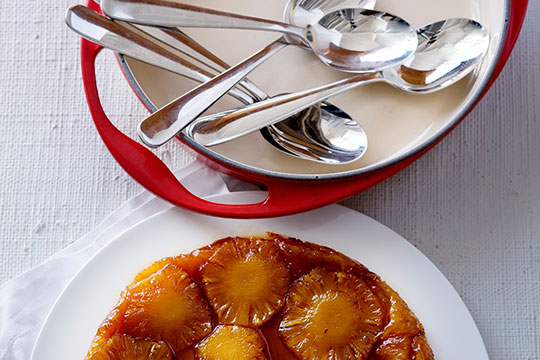
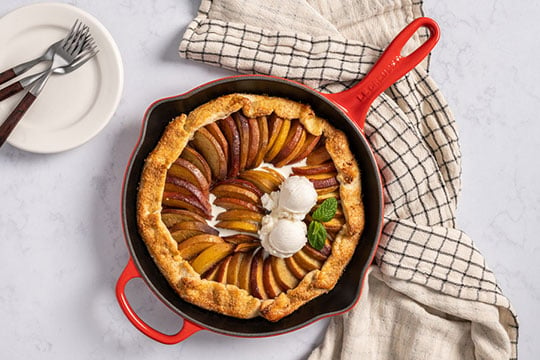
Baking a Tarte Tatin: Tips from our Kitchen
The Le Creuset Heritage Tarte Tatin Dish is designed to help mold the original mistake into a rustic classic. The key to the success of the Tarte Tatin dish is the shallow design with straight sides, enameled cast iron construction for use on stovetop and in oven, and the easy-grip double handles makes it easy to flip the finished recipe. This specially designed dish streamlines and perfects the process, but you can make a delicious tarte using any shallow, enameled cast iron pan or skillet that is stove-top as well as oven-safe. While the exact ratios and cooking times will vary based on what you are cooking, there is a standard method to making a Tarte Tatin that will yield perfectly baked tarts.
- Preheat the oven to a higher baking temperature than traditional pies. 400-425°F is the normal range for a Tarte Tatin.
- Prepare the dough ahead of time. Puff pastry is traditional, but you can also use your favorite butter-rich, flaky pie dough recipe.
- Cook the caramel or savory sauce on the stovetop. For savory tarts, you can also cook the vegetables in the dish, then remove them to cook the sauce, minimizing cleanup.
- Keep the filling, whether apples or shallots, in larger pieces so that they stay intact during the cook time and don’t become mushy. Pack them tightly in the dish, covering the bottom completely.
- Roll the dough out about an inch wider than the dish. The dough will contract during cooking so there needs to be a little extra to fully cover the filling.
- Let the Tarte Tatin rest for 5 minutes before flipping. Place a serving tray or large plate on top of the tart, then carefully flip in one swift motion.
- The Tarte Tatin can be sliced and presented on the tray, or it can be slid back into the colorful Tarte Tatin Dish, dough side down, to keep warm for serving.
- Add toppings before serving. Whipped cream or vanilla ice cream are natural accompaniments to sweet tarts, while toppings for savory tarts include fresh herbs, crumbled cheese and toasted nuts.


